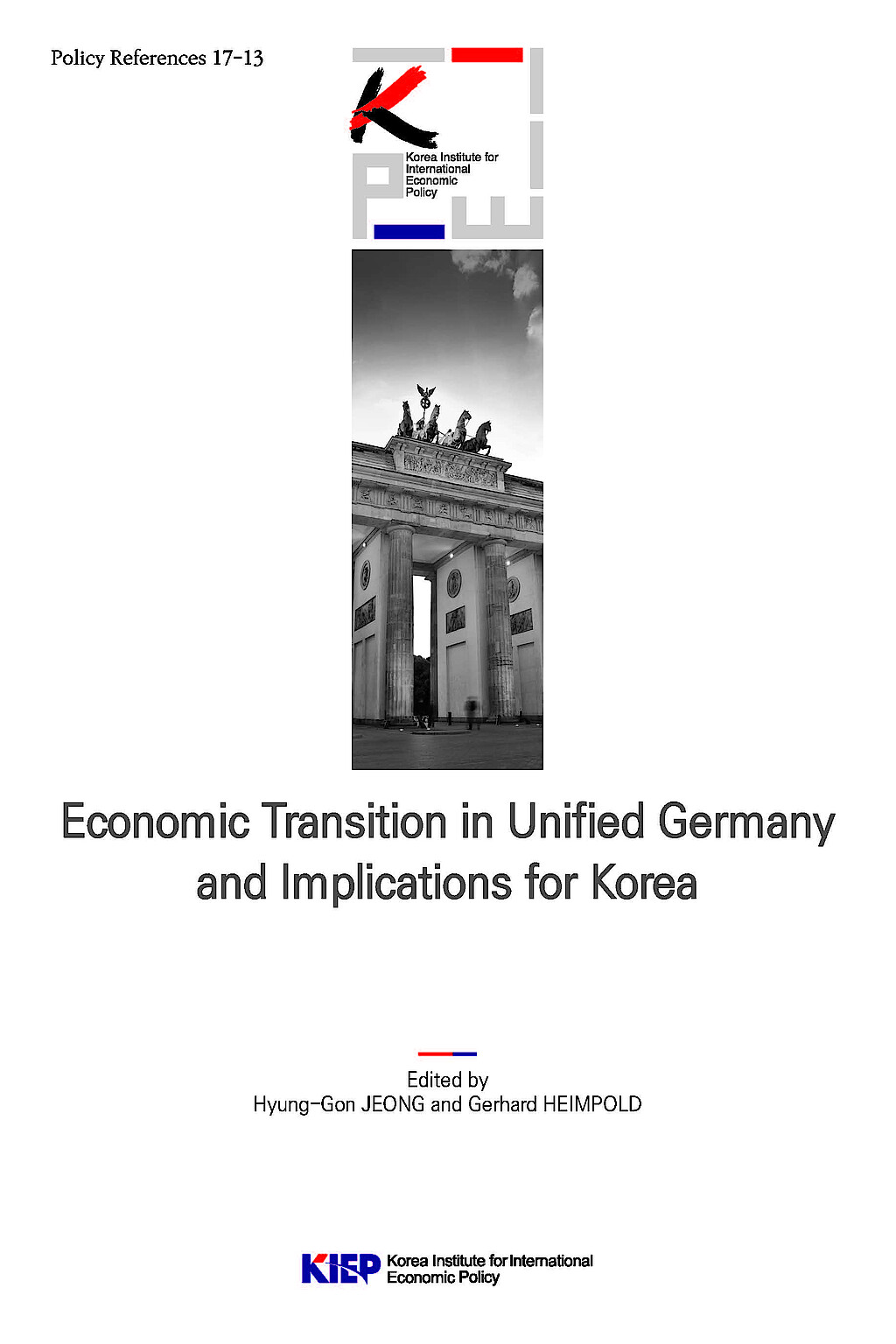
Economic Transition in Unified Germany and Implications for Korea
The reunification of Germany, which marked the end of the Cold War in the 20th century, is regarded as one of the most exemplary cases of social integration in human history. Nearly three decades after the German reunification, the economic and social shocks that occurred at the beginning of the reunification process have largely been resolved. Moreover, the unified Germany has grown into one of the most advanced economies in the world. The unification process that Germany underwent may not necessarily be the way that the Republic of Korea would choose. However, the economic and social exchanges between East and West Germany prior to unification, and the cooperation in a myriad of policies based on these exchanges, served as the crucial foundation for unification. The case of Germany will surely help us find a better way for the re-unification of the Korean Peninsula. In this context, this is the first edition of a joint research which provides diverse insights on social and economic issues during the process of unification. It consists of nine chapters whose main topics include policies on macroeconomic stabilization, the privatization of state-owned enterprises in East Germany, labor policies and the migration of labor, integration of the social safety nets of the North and South, and securing finances for reunification. To start with, the first part covers macroeconomic stabilization measures, which include policies implemented by the federal government of Germany to overcome macroeconomic shocks directly after the reunification. There was a temporary setback in the economy at the initial phase of reunification as the investment per GDP went down and the level of fiscal debt escalated, reverting to its original trend prior to the reunification. While it appears the momentum for growth was compromised by reunification from the perspective of growth rate of real GDP, this state did not last long and benefits have outpaced the costs since 2000. In the section which examines the privatization of state-owned enterprises in East Germany, an analysis was conducted on the modernization of industrial infrastructure of East German firms. There was a surge in investment in East German area at the beginning stages but this was focused on a specific group of firms. Most of the firms were privatized through unofficial channels, with a third of these conducted in a management buy-out (MBO) process that was highly effective. Further analysis of a firm called Jenoptik, which was successfully bailed out, is incorporated as to draw implications of its accomplishments. In the section on migration, we examine how the gap between the unemployment rates in the West and East have narrowed as the population flow shifted from the West to East. Consequently, there was no significant deviation in terms of the Gross Regional Domestic Product (GRDP) per capita in each state of East Germany. However, as the labor market stabilized in East Germany and population flows have weakened, the deviation will become larger. Meanwhile, if we make a prediction about the movement of population between the North and the South, which show a remarkable difference in their economic circumstances, a radical reunification process such as Germany’s case would force 7% of the population of the North to move towards the South. Upon reunification, the estimated unemployment rate in North Korea would remain at least 30% for the time being. In order to reduce the initial unemployment rate, it is crucial to design a program that trains the unemployed and to build a system that predicts changes in labor demand. It seems nearly impossible to apply the social safety nets of the South to the North, as there is a systemic difference in ideologies. Taking steps toward integration would be the most suitable option in the case of the Koreas. We propose to build a sound groundwork for stabilizing the interest rates and exchange rates, maintain stable fiscal policies, raise momentum for economic growth and make sure people understand the means required to financially support the North in order to reduce the gap between the two. This book was jointly organized and edited by Dr. Hyung-gon Jeong of the Korea Institute for International Economic Policy (KIEP) and Dr. Gerhard Heimpold of the Halle Institute for Economic Research (IWH). We believe that this report, which examines numerous social and economic agendas that emerged during the reunification of Germany, will provide truly important reference for both Koreas. It is also our view that it will serve as a stepping-stone to establish policies in regard to South-North exchanges across numerous sectors prior to discussions of reunification. KIEP will continue to work with IWH and contribute its expertise to the establishment of grounds for unification policies.





